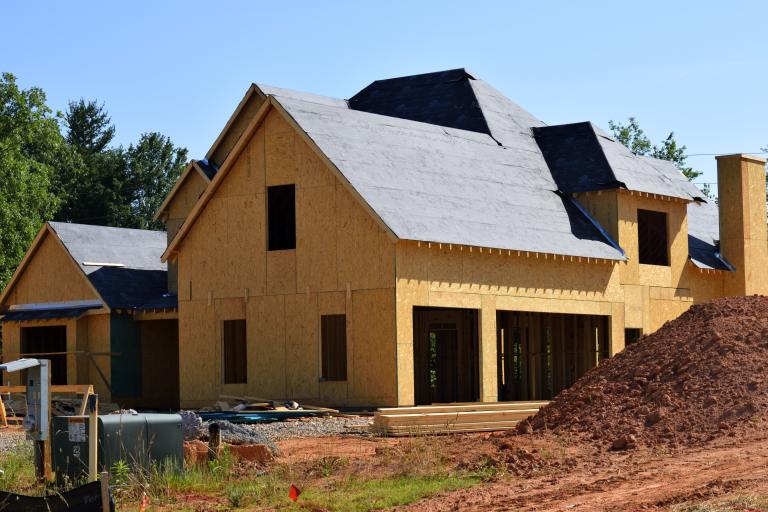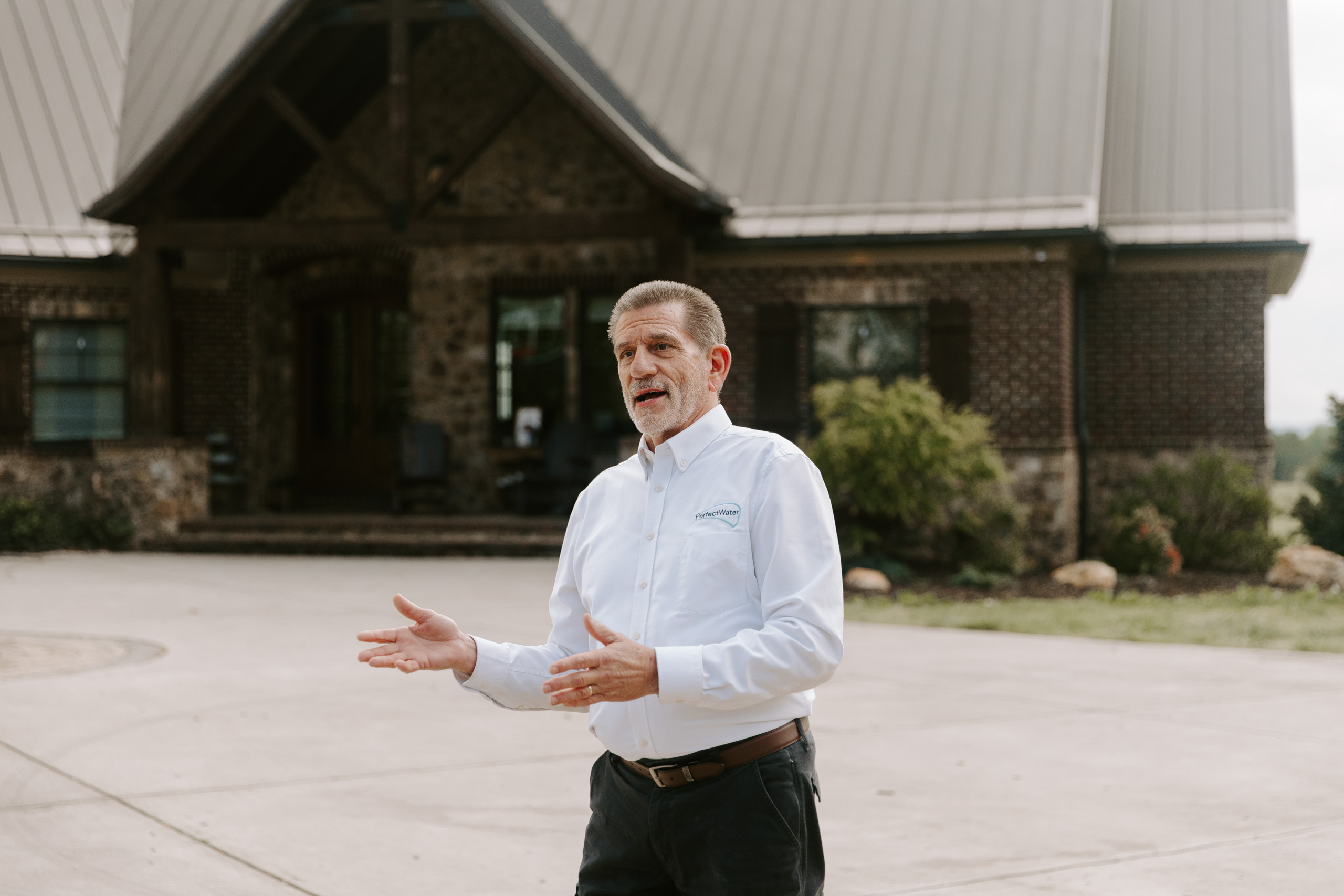6 Home Enhancements to Ask Your Custom Builder For That You Might Not Be Aware Of

Are you currently building a home? Or are you in the dream stages of thinking about building a home? In either case, this article is for you.
The process of building a home is long and full of decisions. Sometimes it can seem like there are too many options to know what is best, and other times, you are worried you might be forgetting something or that you’re unaware of an option that could really add to your new home.
This is why we wrote this article. To make sure that you know ALL the options when it comes to your WATER.
Water Filtration, Leak Protection, and More!
We will be covering 6 options that you may not be aware of when it comes to your water in your new home. We hope this is helpful and informative, and that it gives a clear understanding so that you can know the options available and decide exactly what you want.
It’s time to take control of your water.
1. Whole-House Chlorine Removal
Every single day, millions of Americans drink and shower in chlorine/chloramine-filled water. It is one of the most common used disinfectants in water municipalities. You can be sure that if you are using or planning to use municipal water, it will be filled with chlorine.
One of the scary parts about chlorinated water is that if it is all you have ever known, you probably don’t notice it’s odor and taste. But if you go two weeks using chlorine-free water and then go back to a chlorinated water, you will most certainly be amazed by the strong the odor and taste.
Not only is is the odor and taste an issue, but chlorine is a toxic chemical. It is harmful to your body, inside and out.
Drinking chlorinated water is like taking a bottle of pure water, and then adding just a drop or two of a toxic harmful chemical. Would you do that? OF COURSE NOT.
And chlorine can also be absorbed through the skin when showering and is also harmful to the skin itself, causing dryness and itchiness.
What’s the solution? Chlorine-removal system. These are fully effective and rather easy to tie into your whole-house water. When coupled with the ability to install in a new construction application, the result is an effective system that is tied in beautifully with your home – out of sight and out of mind.
2. Whole-House Water Softening
Have you ever heard of hard water or soft water? Most municipalities in the U.S. (about 90%-95%) provide hard water. In Tennessee, all Nashville and Knoxville municipalities provide hard water.
I’ll cut straight to the chase – here are 8 ways hard water can affect you. (And there are even more than this…)
- Hard water coats heating elements inside of (tank and tankless) water heaters, drastically cutting down efficiency and heating ability.
- Hard water leaves scale deposits in house plumbing, causing lower water flow and pressure.
- Hard water clogs water passages in washing machines, dishwashers, coffee machines, and ice makers which is detrimental to their functionality.
- Hard water fights against detergent (clothes and dish) which causes need for more detergent to be used. (With soft water, half the normal amount of detergent is needed)
- Hard water fights against shampoo and body wash, which causes need for more shampoo and body wash. Soft water more easily provides a rich lather.
- Hard water leaves scale deposits on glass and porcelain, affecting dishes, bathrooms, and kitchens. The white scaly substance on your bathroom glass door is probably hard water deposits.
- Hard water dries the skin, covering the skin in hard water deposits which is not easily removed by soaps – but rather must be covered up with lotions.
- Hard water affects hair by leaving deposits on the hair it removes the natural silky and full feeling of healthy hair. Shampoos and conditioners are heavily used to combat this.
Water softeners have incredible technology these days. Softeners that we sell are efficient, do not use a lot of salt, and are effective.
There are multiple benefits to coming in during new construction, but the biggest is placement – selecting a spot for your water softening system, which takes about as much floor space as a hot water heater.
We are also able to provide a softener that is perfectly suited to meet the needs of the house in regards to flow rate and daily demand.
3. Drinking Water Purification
Purified drinking water is an investment in health. And when I say purified drinking water, I am referring to the highest purified drinking water available for residential use – reverse osmosis.
Here are three myths that I am going to de-bunk for you:
- Municipal water is pure enough for me to drink – this is true, millions of people do drink municipal water every day, but that does not mean that municipal water is high in quality and free of contaminants. Quite the opposite. Here’s an article I wrote covering the contaminants found in municipal water.
- Bottled water is good solution – There are four main problems with bottled water. First, it a constant annoyance to go to the grocery store and haul around bottled water to your home. Second, the quality of bottled water isn’t necessarily as good as you might think. While some bottled water companies do use good processes like reverse osmosis to filter the water, some bottle it straight from municipal water with little to no filtration. Third, single-use plastic is a major problem in the U.S., don’t add to it. And finally, the regulations on bottled water, in many cases, is less than that of even municipal water. Re-read that sentence. A recent study found that on average, twice as many micro-plastics are found in bottled water than in municipal water. Here’s an article I wrote that goes in-depth on bottled water.
- A faucet, fridge, or pitcher faucet like Brita or Berkey works just as good as reverse osmosis – This is factually incorrect on all accounts. The wording used in advertising of these filters is misleading and false. They claim to remove 99.99% of all contaminants, but that is impossible. The technology used in these filters is comprised of one or both of these items: a carbon filter (to remove chlorine – the primary taste issue), and a sediment filter, never below 0.1 microns. There are many contaminants that fall into the category that are not removed by chlorine and are much smaller than 0.1 micron. Reverse osmosis however, uses carbon filtration, sediment filtration, and high density membrane that filters down to 0.0001 micron. That is a BIG difference. Sure, the water coming out of a Brita or Berkey filter will taste better than if it doesn’t at all, but that is because both have carbon filters which remove chlorine, which causes the major taste difference. Other contaminants still can pass through such as pesticides, hormones, pharmaceuticals, and more.
There are GREAT benefits to using purified drinking water at new construction. We are able to run purified water lines from the central purification system to every location in the house you might use drinking water – Coffee machines, ice makers, bathrooms, master closet, wet bar, game room, outdoor kitchen, and wherever else!
4. Whole-House Water Filtration (Well Water and Spring Water)
If you are planning on using a well or spring as your water supply, filtration should certainly be in the discussion. With both well water and spring water, contaminants can be and are an issue.
No matter what, the water should be free of bacteria, and the only way to make sure of that is using a system such as an ultraviolet light to completely eliminate any chance of bacteria.
Other common contaminants include water hardness, sulfur, sediment, and iron. There are even more possible contaminants than this, so make sure that you take control of your well water or spring water source.
5. Leak Protection
Leak protection is a worthwhile investment. The technology that we sell provides the ability to have as many monitoring points as needed (behind a dishwasher, near the water heater, near drain ports, and other water areas. If water is detected at any of these points, the water supply is automatically shut off until the location is inspected and the problem is solved.
This can save thousands and thousands of dollars. We have experienced too many times where customers had a dishwasher leak or a plumbing fitting burst and it ruined cabinets, flooring, and more.
This provides peace-of-mind and is the smart decision in protecting your home.
Coming in at new construction phase allows greater options for monitoring and customizations.
6. Rainwater Harvesting (Alternate Water Source!)
That’s right! If you are building a new home, rainwater harvesting can be the primary supply of water to your entire home! Used for washing, bathing, drinking, cooking, and for whatever else you use water!
There are many Tennesseans right NOW that are using rainwater to supply their home. We have customers who they and their children use rainwater every day as their supply of water – and they LOVE it.
Two questions I often receive when this idea is brought up are these:
- Is there enough rainwater to supply my home? In many cases, rainwater harvesting can fully supply 100% of water demand for a home 365 days every year. Many of our customers rely solely on rainwater harvesting and do not have another water source. But for customers that do have access to municipal water, they often have us install an automatic switchover so that should an extended period of drought arise, the home can automatically switch to municipal water. On top of that, our team runs engineered calculations in the design phase to ensure maximum efficiency and functionality in rain capture. Of course, it will depend on the size of the roof and demand calculations, but in most cases, rainwater can supply most if not all of the water demand for a residential application.
- Is the rainwater pure? Rainwater, when it is falling to the ground, is actually the purest naturally found water on earth. It’s when it comes in contact with the ground and other objects that it becomes contaminated. So when it lands on a roof, it is exposed to rather few contaminants compared to river water (which most Tennessee municipalities use). Using a designed process, the rainwater is filtered before it enter storage, and is also sent through a filtration panel right before entering the household plumbing which makes it very high in water quality and free of chemicals and unwanted contaminants. And rainwater is naturally soft, so no softener is required!
Want to learn more about rainwater harvesting? Check out our guide to rainwater harvesting page! There is so much to learn about rainwater harvesting and we would be glad to answer any questions you might have.
I hope this article has been helpful and informative to you! I hope it has given you a better idea on what some of your options are when it comes to water and your new home!
Want to learn even more about whole-home water purification in Knoxville and Nashville? Check out our Knoxville and Nashville Residents Guide to Water Purification.
Ready to Take Control of Your Water Supply?
Don’t wait for water shortages or unreliable sources to disrupt your life. With our Rainwater Harvesting systems, you can enjoy a sustainable, reliable, and completely self-sufficient water solution tailored to your home’s needs.

